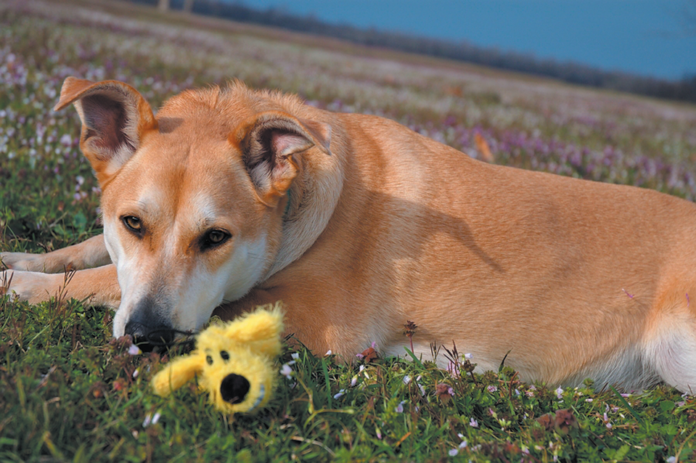It’s hard enough to adopt a dog only to learn that she’s anxious enough to lunge and snap at strangers, or perhaps other dogs. Imagine how hard it is to find that you’ve adopted a dog who has a penchant for snarling at you.
It happens. Someone adopts what seems to be a timid, shy dog who so clearly appears to need a little loving to coax her out of her shell, and she stays her meek and insecure self once she arrives at her new home. But after a couple of months, as she settles in, she begins aggressively calling the shots. Don’t touch my toy — Grrrr. Don’t move my doggie bed to clean — Snarl! It’s both heartbreaking and hard to live with — and scary. What’s going on?
The root cause of the aggression
A dog who turns aggressive on her owner is not trying to rule the roost. Usually, she is engaging in resource guarding as a result of insecurity. Once called dominance behavior, this conduct is now referred to as conflict aggression because she’s exhibiting inner conflict. It’s a more apt term because the dog is not trying to exert dominance. She’s unsure of how things are supposed to work in her new household — it’s not clear to her who the leader is. Thus, she believes she must take care of herself rather than be taken care of. She is also excessively worried about her belongings. The impulse to protect her things is so strong that it overtakes any good feelings she might have toward her owner.
Usually, an adopted dog comes to her new owner with conflict aggression waiting to emerge because of something unfortunate that happened in puppyhood, long before she arrived at her new home. It is generally not the new person’s doing. But it is up to the new owner to train her out of it. Here’s how.
Avoid the guarded resources. This doesn’t mean avoiding things the dog thinks are hers and hers alone. It means avoiding situations in which the dog thinks she’s supposed to exert control. Start by making a list of the situations that cause a growl, snap, or snarl. Maybe they include touching the dog’s bed or toys, or walking by her while she’s eating. From there come strategies. For instance, perhaps the feeding needs to happen in a quiet corner that you generally don’t walk near, with no bowls left around for the dog to guard afterward. The bed may need to remain out of sight, too. If the dog wants to rest on it, she’ll have to go to it, even if she doesn’t love the spot it’s in. And all toys over which she growls should be put away (when she’s not in the room).
None of this means you are wimping out. It means you are taking charge by not making a bad problem worse and not allowing for a further communication failure between you and your pet.
Provide clear, respectful leadership. Taking a leadership role can be difficult for some. They would just like everybody to get along. But dogs with conflict aggression who overzealously guard their resources are often temperamentally bold at the same time that they are anxious and in need of clear direction and predictability. Leadership makes life easier for the dog, not harder. With that in mind, do things like cue the dog to “Sit” before you put down her food bowl. If she doesn’t, don’t put the bowl on the floor. She won’t starve to death before the next meal.
“Think of it as teaching a child to say ‘please’ before telling you to pass the potatoes,” says the head of the Tufts Animal Behavior Clinic, Stephanie Borns-Weil, DVM. Once the dog gets the hang of that, she will appreciate being able to “control” the situation by doing what she needs to get what she wants. And in the process, you will have become someone she looks up to and trusts to meet her needs so she doesn’t have to try to meet them with misplaced aggression.
Same with toys. Once the dog truly begins to get the lay of the land, an owner can choose not to release a favored toy until she follows through on a “Down” cue. She’ll understand how things work in her new home through rules like these.
Incorporate plenty of exercise. All dogs need lots of exercise for a healthy mind as well as a healthy body — at least an hour a day. It’s so important that if you don’t incorporate regular physical activity into your dog’s routine, she is not going to get over her conflict aggression and resource guarding no matter what else you do.
Exercise can mean three 20-minute walks a day, long walks off leash in the woods or a dog-friendly park, or even running on a treadmill, which some canines really enjoy. Whatever it takes, make sure your anxious, aggressive pet moves her body.





